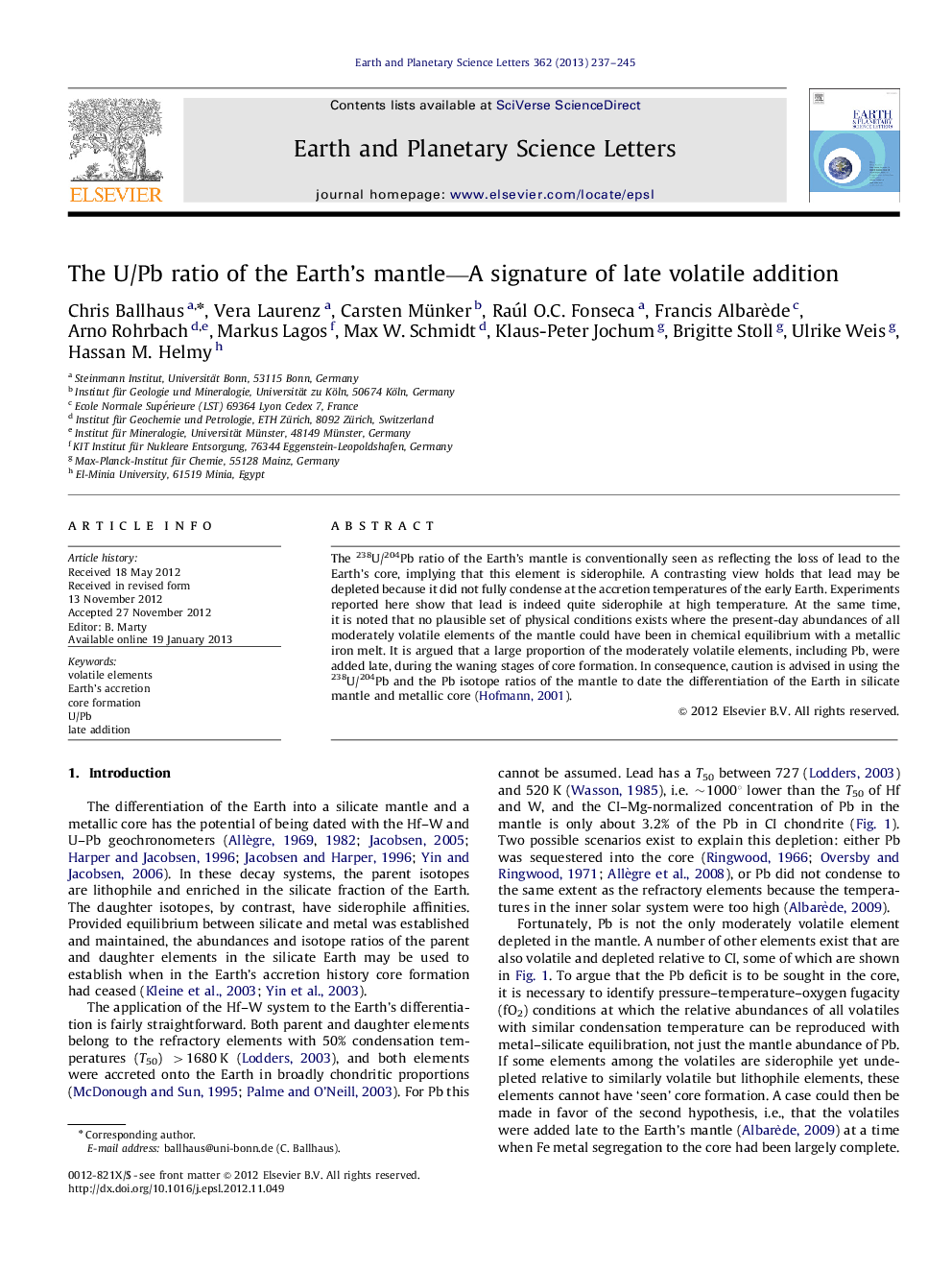| Article ID | Journal | Published Year | Pages | File Type |
|---|---|---|---|---|
| 4677262 | Earth and Planetary Science Letters | 2013 | 9 Pages |
The 238U/204Pb ratio of the Earth's mantle is conventionally seen as reflecting the loss of lead to the Earth's core, implying that this element is siderophile. A contrasting view holds that lead may be depleted because it did not fully condense at the accretion temperatures of the early Earth. Experiments reported here show that lead is indeed quite siderophile at high temperature. At the same time, it is noted that no plausible set of physical conditions exists where the present-day abundances of all moderately volatile elements of the mantle could have been in chemical equilibrium with a metallic iron melt. It is argued that a large proportion of the moderately volatile elements, including Pb, were added late, during the waning stages of core formation. In consequence, caution is advised in using the 238U/204Pb and the Pb isotope ratios of the mantle to date the differentiation of the Earth in silicate mantle and metallic core (Hofmann, 2001).
► The volatile elements of the Earth's mantle are added late. ► The volatiles were added after formation of the core was complete. ► The 238U/204Pb ratio of the mantle may not reflect core formation.
